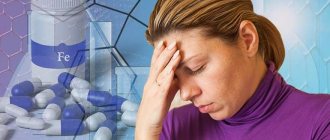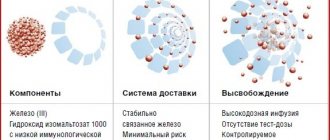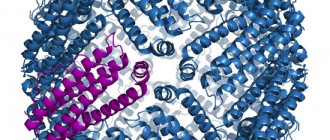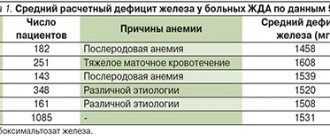- Features of the pancreas in children and adults
- Role and functions of the pancreas
- How does the pancreas work?
- Pancreatic enzymes
- The role of hormones
- How to prevent malfunctions of the pancreas?
The pancreas is one of the most important internal organs. This is a small, palm-sized organ that is located between the stomach and the spine. The pancreas (PG) contains three sections that are responsible for producing enzymes that help digest food. The pancreas also produces hormones designed to maintain normal glucose levels.
Features of the pancreas in children and adults
The pancreas is a rather sensitive organ. At the slightest disruption in its work, a person’s well-being immediately worsens. In adults, the size of this organ reaches 22 cm, weight up to 80 g. The formation of the organ occurs 4-5 weeks after conception. The pancreas is formed from endoderm and mesenchyme and is located near the liver. During development, the organ acquires parts: tail, body, head. The pancreas begins to perform its main functions already at the end of the 1st trimester of pregnancy. For some time the organ is mobile, which is explained by the lack of reliable fixation. Closer to 6 years of age, he occupies a permanent position.
Structure
Despite the fact that the pancreas is small in size, its importance is very large
It is located approximately between the first and second lumbar vertebrae in the retroperitoneal space. The gland can be divided into three sections:
- Head. This is the widest part of the organ, which is mainly located in the internal bend of the duodenum, and it seems that the intestine seems to cover this part of the gland. This part is separated from other parts by a groove in which the portal vein is located. In addition, another duct departs from the head, which can be connected to the main duct in the pancreas, or can independently flow into the duodenum. The width of the head is from 3 to 7 cm, depending on the individual characteristics of the body
- Body. It is located slightly to the left of the spine and has the shape of a triangle. There are three parts of the body - the anterior surface, the posterior surface and the lower surface. The approximate width of the gland body is from 2 to 5 centimeters
- Tail. This is the narrowest part of this organ, the width of which varies from 3 millimeters to 3 centimeters. The main duct passes through this section and then connects (or flows into) the duodenum
It is worth talking separately about the microscopic structure of this organ. It has a cell-like and tubular structure, and between each cell and tube there are connecting strands through which ducts, vessels, etc. pass. From this point of view, the pancreas can be divided into two parts:
- Endocrine
- Exocrine
Blood supply occurs through vessels:
- Anterior superior duodenal artery
- Posterior superior duodenal artery
- Inferior duodenal artery
- Pancreatic vein
For a person who does not have a medical education, such a structure may seem very complicated, since most of the terms listed are unknown to few people. Moreover, few people know how the lower artery differs from the upper one, and what role the portal vein plays. But still, you need to know the approximate structure in order to better understand what main functions the pancreas performs and how it works.
Role and functions of the pancreas
The pancreas provides several functions at once: the production of hormones and digestive enzymes. It is an exocrine and intrasecretory gland.
The pancreas produces hormones that ensure the breakdown of fatty acids necessary for the functioning of the kidneys, heart, and muscles. The pancreas is also responsible for the production of hormones that regulate sugar levels (insulin, glucagon). It releases ghrelin, which is responsible for the urge to eat. Provides participation in metabolic processes: fat, carbohydrate, protein.
The pancreas is also responsible for the production of enzymes necessary for digestion. The key task of enzymes is the metabolism of carbohydrates, proteins, and fats.
If one function fails, the others remain normal, thanks to the division into different sections responsible for the production of enzymes/hormones. Thus, in diabetes mellitus there are no digestive disorders, and previous inflammation of the organ does not necessarily cause persistent hypoglycemia. However, it is important to understand that pathological changes in the organ can negatively affect the body’s energy supply and carbohydrate-fat metabolism.
When should you make an appointment with a doctor?
If nausea does not go away for a long time, it is accompanied by vomiting, diarrhea, or an increase in body temperature, you need to consult a doctor. Often these symptoms are confused with food poisoning and mild stomach upsets. This may be an exacerbation of pancreatitis. A gastroenterologist treats pancreatitis; he will diagnose, prescribe treatment, and monitor the healing process. The examination is carried out using new equipment, doctors use modern treatment methods. JSC "Medicine" (clinic of academician Roitberg) is located in the center of Moscow, at 2nd Tverskoy-Yamskaya lane 10, not far from the metro stations Chekhovskaya, Mayakovskaya, Belorusskaya, Novoslobodskaya, Tverskaya.
How does the pancreas work?
The components of the pancreas are the islets of Langerhans. They consist of cells that produce hormones:
- delta cells - produce somatostatin, gastrin and ghrelin;
- beta cells - ensure the production of insulin;
- a-cells - produce glucagon;
- PP cells produce pancreatic polypeptide.
Proinsulin protein is synthesized in beta cells. When the C-peptide molecules are separated, it is converted into insulin. The part that is not synthesized enters the blood unchanged. Insulin is required by the body to transport glucose, which is the main source of energy. It is also responsible for the delivery of amino acids and potassium to cells. It itself is not able to penetrate the cell, but can affect its receptors. Insufficient insulin production occurs when beta cells are damaged. As a result, a person develops type 1 diabetes mellitus. If the process of glucose penetration into the cell is disrupted, type 2 diabetes is diagnosed. In this case, there is enough insulin in the blood, but the cells do not recognize it. In the first and second cases, glucose accumulates, which cannot be transported into cells, resulting in hyperglycemia. An excess of insulin secretion leads to the formation of insulinoma.
Glucagon (an insulin antagonist) is produced by the a-cells of the pancreas. When its level increases, the body receives a signal about the need for glucose. This is achieved by the transformation of glycogen to produce glucose or its formation through gluconeogenesis.
Gastrin is responsible for stimulating gastric secretion. Its concentration level changes throughout the day. It almost doubles after eating food. Production occurs when the level of hydrochloric acid in the stomach drops. Samostatin has an effect on the digestive system by suppressing the production of hormones (glucagon, gastrin, insulin) and enzymes. Able to suppress the secretion of other gastrointestinal organs.
Diagnosis of the disease at the private medical clinic “Medunion”
Diagnosing this disease is not difficult, since the first signs speak for themselves. However, in order to prescribe adequate treatment, it is necessary to determine the form of the disease. To do this, the doctor performs laparoscopy - a method that allows you to examine the abdominal cavity from the inside using a special instrument.
If acute pancreatitis is suspected, laboratory tests are performed:
- General blood analysis
- Blood chemistry
- Analysis of urine
- Stool analysis
- Ultrasound, MRI or radiography of the abdominal organs
- Computed tomography according to indications
In the chronic form, the same studies are carried out, but it is better to take tests during the period of exacerbation of the disease.
Pancreatic enzymes
The pancreas produces digestive juice rich in enzymes. At the cellular level, proenzymes are produced, which remain passive until a certain point. After food enters the stomach, they are activated. Additionally, hormones that activate pancreatic enzymes enter the duodenum. The production of enzymes depends on pancreozymin, secretin, secreted by the mucous membrane of the small intestine upon penetration of gastric juice. Hydrochloric acid has an irritating effect.
To participate in the digestion process, the pancreas produces:
- Amylase - performs the breakdown of carbohydrates.
- Trypsin, chymotrypsin - after the stages of protein digestion in the stomach, it breaks down.
- Lipase - ensures the breakdown of fats.
Amylase synthesis is partially carried out by the salivary glands, while trypsin is produced exclusively by pancreatic cells. The production of lipase is carried out not only by the pancreas, but also by other organs: intestines, liver, lungs. The enzyme is water-soluble and is involved in the breakdown of neutral fats. Provides a vital role in energy supply processes, transports polyunsaturated fatty acids and promotes the absorption of vitamins responsible for the dissolution of fats. The enzyme production mechanism starts after food enters the body.
Symptoms of pancreatitis
The main symptom of pancreatitis is severe pain. Along with it, nausea, vomiting, a slight increase in temperature, flatulence, stool disorders and some other symptoms may be observed.
Abdominal pain
The main symptom of acute pancreatitis is severe pain, which usually begins in the left side and then becomes encircling. The pain is not relieved either by antispasmodics (“no-spa” and analogues) or by painkillers (analgesics). Lying on your back may intensify. An attack of pain with pancreatitis is usually observed after eating or drinking alcohol. When eating against the background of pain, the pain intensifies.
Vomit
The onset of acute pancreatitis may be accompanied by bouts of vomiting. Vomit with pancreatitis usually contains bile. During this period, you must completely stop eating.
More about the symptom
Temperature
During an attack of pancreatitis, the temperature may rise to 37.5°C.
More about the symptom
Flatulence
The attack disrupts intestinal motility. This leads to bloating.
More about the symptom
Stool disorder
The lack of necessary enzymes does not allow food to be properly digested, which causes stool upset.
The role of hormones
Insulin and glucagon control blood sugar levels. Insulin ensures the entry of glucose into the cell, stimulates its absorption, and reduces the amount of sugar in the blood.
The main task of glucagon is to prevent hypoglycemia. It increases sugar levels. A-cells in the islets of Langerhans are responsible for production, which also produce lipocaine, which protects the liver from degeneration.
Pancreatic polypeptide produced by PP cells suppresses the secretion of gastric juice. It consists of more than three dozen amino acids that perform secretory functions. Thus, disturbances in the functioning of the pancreas can cause malfunctions and problems in other organs and systems of the body.
Complications after taking medications
Medicines for pancreatitis, like any medicine, can lead to complications. Antibiotics - for digestive upset, non-steroidal anti-inflammatory drugs - for complications in the gastrointestinal tract and cardiovascular system. Enzyme preparations can cause allergies and lead to iron deficiency. Antisecretory drugs, although they are considered drugs with a minimum of side effects, can cause withdrawal syndrome: the appearance of heartburn and sometimes pain in the sternum after stopping their use. Even vitamins, if taken immoderately and without prior testing, can become not just a useless, but also a dangerous supplement.
How to prevent malfunctions of the pancreas?
If you have pain or discomfort in the abdominal area, you should immediately contact a gastroenterologist.
Pancreatitis (inflammation of the pancreas) is accompanied by frustration, vomiting, pain in the left hypochondrium, weakness and rapid pulse. With chronic inflammation, the pain is less intense, mainly after eating food. If alarming symptoms appear, examination and consultation with a specialist is necessary.
It is important to check your blood sugar levels regularly. This way you can prevent the development of diabetes and the occurrence of hyperglycemic coma - a condition in which sugar exceeds the permissible norm by several times. The danger of this condition is a high risk of death. No less dangerous is hypoglycemia, in which the glucose level decreases relative to the permissible values. This condition is even more dangerous than hyperglycemia, since it is much more difficult to increase sugar levels than to reduce them. Consequently, the risk of developing irreversible consequences in internal organs is much higher than with hyperglycemia.
Prevention of damage to the pancreas consists of proper nutrition with a low content of fast carbohydrates: refined sugar and products based on it (confectionery, fast food and other products). The diet should be balanced and contain proteins, fats and so-called “long” carbohydrates: cereals, fruits (in moderation), vegetables. Besides. The diet should be rich in essential microelements that contribute to the smooth functioning of the pancreas and other organs.
Causes of pancreatitis
In most cases, pancreatitis develops as a result of cholelithiasis (stones can obstruct the outflow of pancreatic secretions), or as a result of alcohol abuse.
Women at risk are during pregnancy and in the early postpartum period. Monotonous food, overeating and consumption of low-quality foods (including fast food) can also cause an attack of acute pancreatitis.
Other factors contributing to the development of pancreatitis include:
- diseases of the stomach and duodenum;
- tumors;
- injuries;
- parasites (worms);
- taking certain medications, such as furosemide, estrogens, antibiotics, sulfonamides;
- metabolic disease;
- hormonal changes;
- vascular diseases.
Most often the disease is registered between the ages of 40 and 60 years.
Sources
- Minutes of the meeting of the Expert Commission on Health Development of the Ministry of Health of the Republic of Kazakhstan No. 23 dated December 12, 2013. Acute pancreatitis.
- St. Petersburg State Medical University named after Academician I. P. Pavlov. Department of Faculty Therapy, author: Honored Doctor of the Russian Federation, Associate Professor E. V. Kraevsky. Chronic pancreatitis.
- Clinical protocol for diagnosis and treatment No. 18 of the Expert Council of the Republican State Enterprise at the Republican Center for Healthcare Development of the Ministry of Health and Social Development of the Republic of Kazakhstan dated November 30, 2015. Chronic pancreatitis in children.
- First St. Petersburg State Medical University named after. acad. I.P. Pavlova. Treatment of acute pancreatitis. Authors: S. F. Bagnenko, N. V. Rukhlyada, A. D. Tolstoy, V. R. Goltsov.









